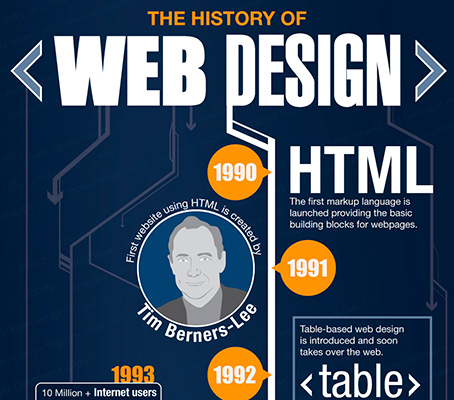Site Layout: A Journey With Time.From Humble Beginnings To Modern Wonders, Internet Site Style Has Actually Gone Through A Significant Change Throughout The Years
Site Layout: A Journey With Time.From Humble Beginnings To Modern Wonders, Internet Site Style Has Actually Gone Through A Significant Change Throughout The Years
Blog Article
Web Content By-Dalrymple Bowles
In the past, websites were easy and focused on information. Navigation was straight, and style was for desktop computers. Currently, individual experience is crucial. Data guides styles for easy navigating. Responsive formats suit various gadgets. Today, dark mode lowers stress, and minimalist menus improve navigating. Interactive features engage customers, and strong visuals stand apart. AI combination boosts involvement. See exactly how style has evolved to enhance your online trip.
Early Days of Website Design
In the early days of web design, simpleness reigned supreme. Websites were standard, with limited shades, font styles, and formats. The emphasis got on offering info instead of flashy visuals. relevant resource site accessed the web via slow-moving dial-up links, so rate and performance were crucial.
Navigation food selections were straightforward, generally located at the top or side of the web page. Internet sites were created for desktop computers, as mobile surfing wasn't yet prevalent. Material was king, and designers prioritized easy readability over complicated layout aspects.
HTML was the primary coding language made use of, and developers needed to function within its constraints. Animations and interactive functions were very little contrasted to today's requirements. Web sites were static, with little dynamic material or personalized user experiences.
Rise of User-Focused Design
With the development of website design, a change towards user-focused layout concepts has come to be progressively popular. Today, creating web sites that focus on user experience is important for engaging site visitors and attaining company objectives. User-focused style involves understanding the needs, preferences, and behaviors of your target market to tailor the site's format, web content, and features accordingly.
Developers currently perform detailed study, such as customer studies and functionality testing, to collect insights and comments straight from individuals. This data-driven method aids in producing intuitive navigation, clear calls-to-action, and aesthetically enticing interfaces that reverberate with visitors. By placing the individual at the facility of the design procedure, internet sites can provide an extra tailored and pleasurable experience.
Receptive design has also become a vital facet of user-focused design, making sure that websites are enhanced for different tools and display sizes. This versatility enhances ease of access and usability, dealing with the diverse methods individuals interact with sites today. Essentially, the rise of user-focused design represents a shift towards creating digital experiences that prioritize the demands and expectations of completion individual.
Modern Trends in Website Design
Check out the latest patterns shaping website design today. One popular trend is dark mode design, providing a streamlined and contemporary look while decreasing eye strain in low-light environments. One more key pattern is minimalist navigation, simplifying food selections and boosting customer experience by concentrating on essential elements. Integrating local seo package pricing -interactions, such as animated buttons or scrolling effects, can produce a much more engaging and interactive web site. Receptive design remains critical, making certain smooth user experiences throughout different tools. In addition, utilizing bold typography and unbalanced designs can add aesthetic interest and accentuate specific material.
Incorporating AI modern technology, like chatbots for consumer assistance or individualized referrals, improves customer interaction and simplifies procedures. Ease of access has additionally become a significant fad, with designers focusing on inclusive layout methods to cater to varied user demands. Embracing sustainability by optimizing site performance for rate and efficiency is another emerging trend in website design. Teaming up with user feedback and information analytics to repeat and boost design continuously is vital for staying pertinent in the ever-evolving digital landscape. By accepting these modern-day fads, you can produce an aesthetically appealing, straightforward website that reverberates with your audience.
Conclusion
As you reflect on the advancement of website design from the very early days to currently, you can see how user-focused layout has become the driving pressure behind modern patterns.
Welcome the trip of modification and adjustment in web design, always keeping the customer experience at the leading edge.
Remain existing with the latest trends and modern technologies, and never ever stop developing your approach to develop visually stunning and straightforward internet sites.
Progress, adapt, and produce - the future of website design is in your hands.
